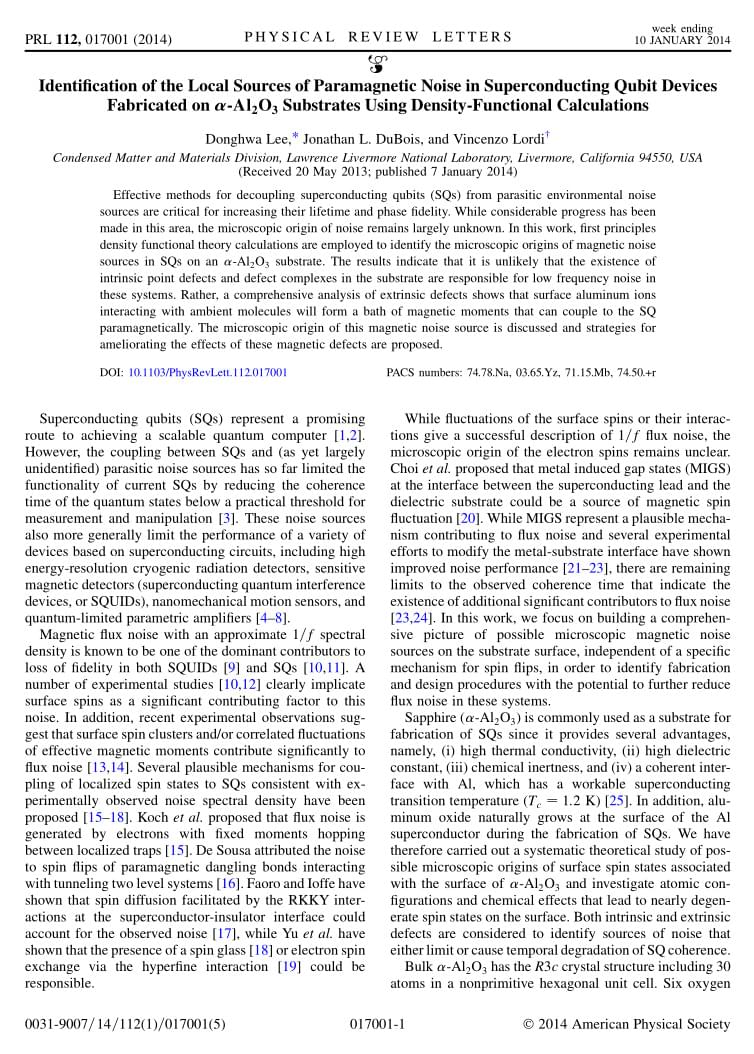Effective methods for decoupling superconducting qubits (SQs) from parasitic environmental noise sources are critical for increasing their lifetime and phase fidelity. While considerable progress has been made in this area, the microscopic origin of noise remains largely unknown. In this work, first principles density functional theory calculations are employed to identify the microscopic origins of magnetic noise sources in SQs on an α-Al_{2}O_{3} substrate. The results indicate that it is unlikely that the existence of intrinsic point defects and defect complexes in the substrate are responsible for low frequency noise in these systems. Rather, a comprehensive analysis of extrinsic defects shows that surface aluminum ions interacting with ambient molecules will form a bath of magnetic moments that can couple to the SQ paramagnetically. The microscopic origin of this magnetic noise source is discussed and strategies for ameliorating the effects of these magnetic defects are proposed.
1 Comment so far
Comments are closed.

In my experimentation with mag-lev and b field resesrch in a physical world have seen b-fjeld viberation related to mechanical sizes of disc and the mag dol. Present and variations on a 1/r2 distance from the axis. This certainly exhibits more drag than just accountable with a shorted turn. I suspect something to do with time shift and lattice structure under constant stress of C.F. acting on the field itself. Heavy inductor induced field will show low VLF resonance while disc is accelerated. Tramco R&D 1992